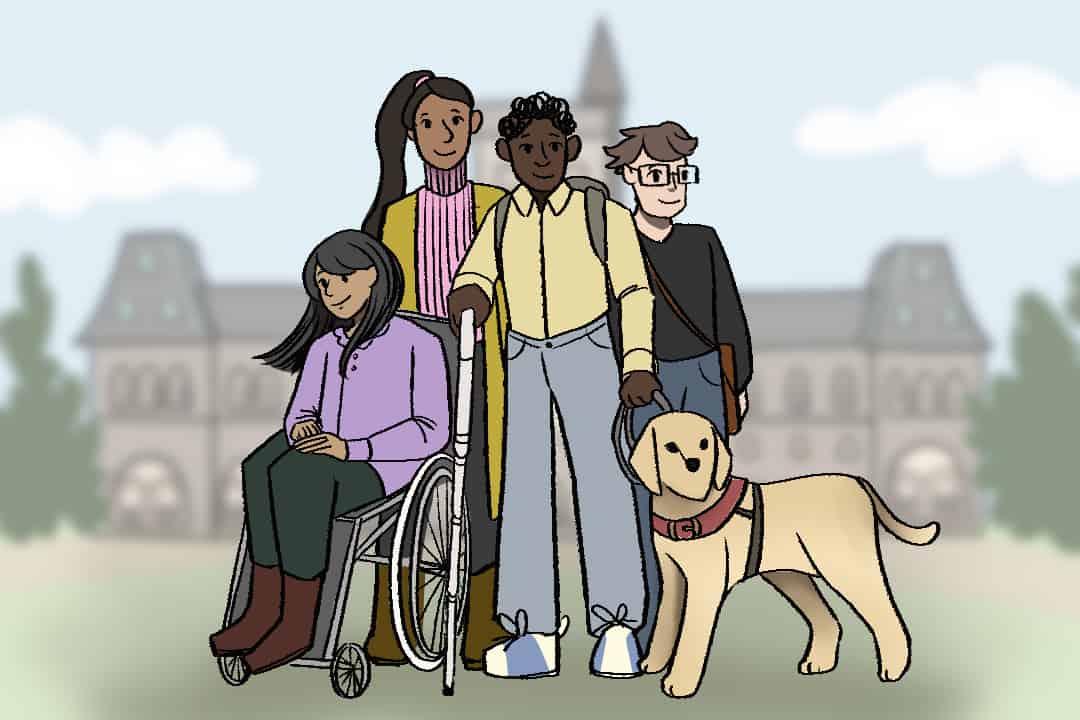U of T’s Accessibility for Ontarians with Disabilities Act (AODA) Office released its 2019–2020 report, which discussed physical, virtual, and attitudinal accessibility initiatives. The initiatives targeted multiple areas of university policy to ensure it was in compliance with the AODA and other standards.
Highlights include a review of design standards for physical and virtual spaces, events and training aimed at eliminating stigma toward visible and invisible disabilities, and an overview of innovative technology for people with disabilities.
Physical and virtual infrastructure
In January 2020, the AODA Office began a review of the university’s Barrier-free Design Standards, a set of guidelines that are part of U of T’s broader instruction on planning, designing, and implementing construction projects.
The review aims to develop standards that are more reflective of legislative and universal design concepts through a consultative approach. The office will also provide a new guideline on how to meaningfully engage in consultations with people with disabilities.
Furthermore, the Landmark Project — U of T’s major reconstruction plan for front campus and King’s College Circle — aims to make these areas more accessible. It will restructure ramps and stairs to have a more gradual slope, create new pedestrian-friendly areas, and incorporate more places for people to sit and rest.
The report also tackles web accessibility in a variety of ways. U of T hired a web accessibility specialist to engage with experts and stakeholders through training sessions, consultations, and reviews. Employees involved in content creation and design now have an appropriate understanding of web accessibility principles, and the office continues to support staff in implementing recommendations.
In an email to The Varsity, Ben Poynton, the AODA officer at U of T, noted that, due to the COVID-19 pandemic, the office has redirected its focus to online spaces. Actions include “website accessibility reviews, support on making updates, and training on web accessibility guidelines and principles.” He added that the AODA has “launched a collaborative space on inclusive and universal design resources for online spaces.”
Confronting attitudinal barriers
In 2019, Accessibility Services launched a survey to reach out to students and, consequently, started promoting external bursaries and scholarships, providing strategy meetings, and increasing drop-in hours.
Students also highlighted stigma as a cause for concern. Since being created in 2017, 13,769 staff and faculty have taken an online training module aimed at addressing this issue. The accessibility office launched several events to both educate students on people with disabilities and to help those affected gain confidence when asking authority figures for accommodations.
Moreover, the office made addressing invisible disabilities a greater priority. The report dedicated a section to explaining a streamlined process for registering service animals for people with physical and emotional disabilities.
The report also briefly mentioned recommendations from the Presidential & Provostial Task Force on Mental Health, such as expanding U of T’s partnerships with hospitals and other organizations in the mental health sector.
Innovation and technology
The report contained details on technology developed by groups affiliated with U of T that will aid people with disabilities in their daily lives.
The U of T startup iMerciv created BuzzClip, a device that can be worn by those with vision loss to detect obstacles using ultrasound.
Another innovation called MuseGo, developed by three U of T graduate students for a competition, uses sensory information to map indoor environments. This can make public spaces like museums more navigable for the caregivers of children with autism spectrum disorder.


